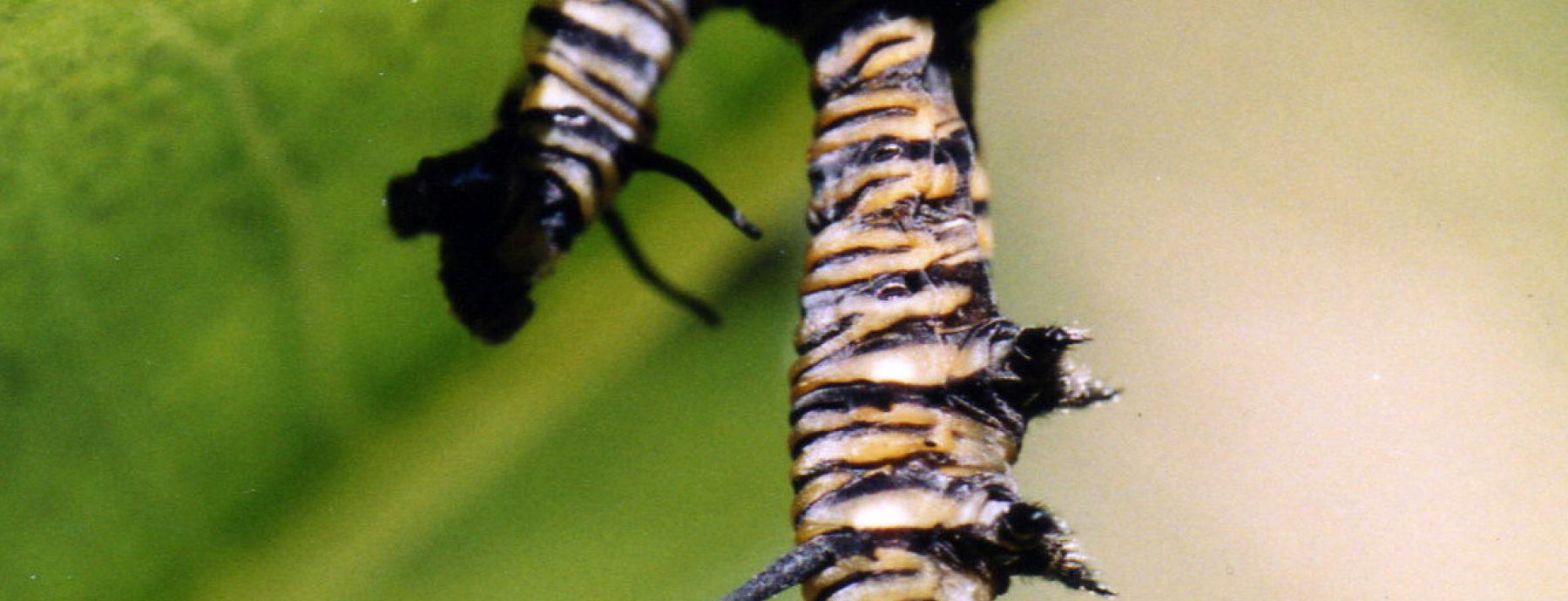Parasites are well known to manipulate their hosts in a variety of ways to benefit their own growth and transmission. For instance, recent work by CIDD Assistant Professor David Hughes has shown that the parasitic fungus O. unilateralis manipulates the behavior of ants to facilitate its transmission to other ants.
In a study published this month in Science, Kelli Hoover, professor of Entomology at PSU, along with David Hughes at CIDD and colleagues at Harvard and the USDA found that a baculovirus, Lymantria dispar nucleo-polyhedrovirus (LdMNPV), which infects the Gypsy moth Lymantria dispar caterpillars and causes behavioral changes in the caterpillars that result in improved success of virus transmission to a new host. These caterpillars normally move away from tree leaves during the day but this study found that virus infected caterpillars remained exposed at the treetops. Additionally, this study clearly identifies one specific gene responsible for the behavioral phenotype observed in the caterpillars that when expressed encodes for an enzyme that results in climbing behavior. Upon death in the tree tops, the internal contents of the caterpillar liquefy and spill down onto leaves, providing an ideal environment for virus transmission to a new host.
This research highlights the power of genetic manipulation of hosts for the benefit of pathogen survival and provides the fist genetic proof of an extended phenotype in which manipulation of one organism (in this case the caterpillar) occurs via the genes of another (the virus).
Synopsis written by Alexia Karanikas.
Written By: Hoover K, Grove M, Gardner M, Hughes DP, McNeil J, & Slavicek J
Paper Url: http://www.sciencemag.org/content/333/6048/1401.abstract
Journal: 333: (1401)
Journal Reference: 333: (1401)
Paper Id: 10.1126/science.1209199
